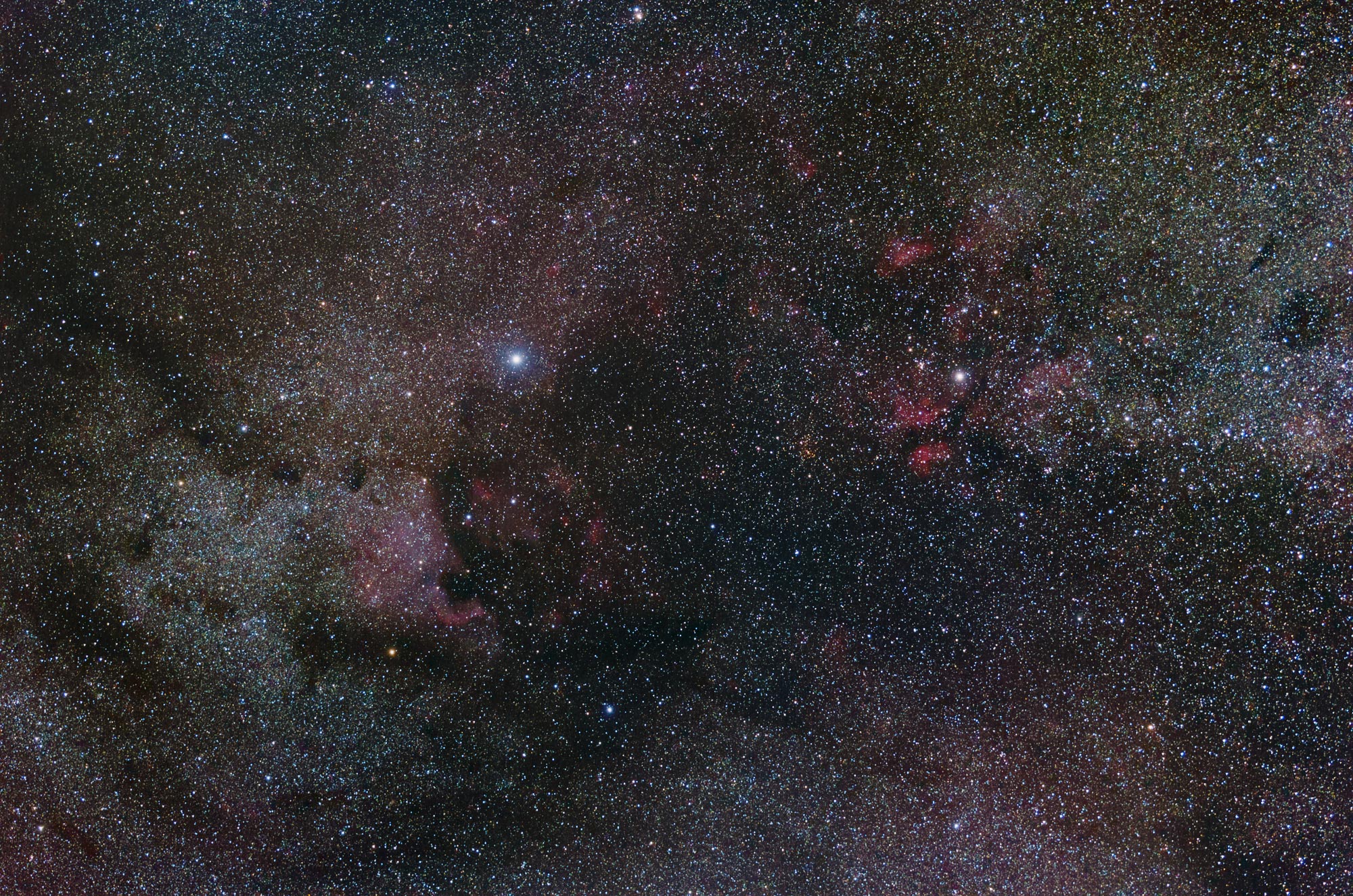I already know a few places where I can take a good Milky Way photo. I just wanted to experiment it out of curiosity. I mean...it's new idea

I probably will try two things if I ever get a chance.
Just for information I've just watched this video on youtube. He calls it ETTR. I'm not sure if that helps me or not, but I will give it a shot.
Forget ETTR, and that video, it's an old terrestrial method of dragging up details in shadows. The
HUGE problem with trying to use it for AP, is that at high ISO's, you're going to start clipping all of your star colors in just a second or less. Your dynamic range is extremely small at ISO 6400.
But first and foremost, I didn't see a single photo in the video, taken from "The City", or even a heavily light polluted area ! All of them were taken at well chosen locations that kept the city lights behind the camera and many miles away. Sure there was a "little" LP to contend with, but a camera can't magically make the Milky Way appear from nowhere in a single shot ! If you can't see the MW with your naked eye above the LP, a single WA frame shot can't capture it either and only makes things worse !
You are far better off just stacking "normal" exposures. Stack 4 "normal " exposures, and you'll have less than 1/2 the noise of a single "ETTR" frame. You don't even need a tracker.
All of the comparisons between the noise in the ETTR photos vs a "normal" is also to be expected. You can't "stretch up" a single normal photo without radically increasing the noise, but try it with just a stack of 5-10 photos at a "normal exposure/ ISO" and it will leave ETTR in the dust. Try stacking 30-40 "normal" exposures, and you'll see why all astrophotgraphers use stacking. I don't know of a single one using "ETTR".
FWIW, this is what I was able to do, stacking 4 hrs worth of short subs @ ISO 400, using my iOptron Skytracker and a 70mm lens @ f5.6 from the heart of town last fall. I had to wait until 11PM to even get started, when many of the city lights start shutting off. I've NEVER even seen the MW from my yard, but this is what I was able to do with a few hundred shorter exposures and 4 hrs of time on the intervalometer.
I can get the same image in only 20 minutes, using just slightly longer subs, unimpeded by LP from my dark site. Hummm, 4 hrs/ 20 minutes.....4 hours/ 20 minutes. Extrapolate the either way, 4 hrs at a dark site ??
In any event ETTR is a lose/ lose proposition for AP.



